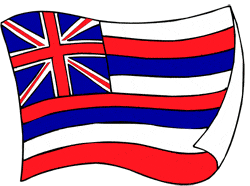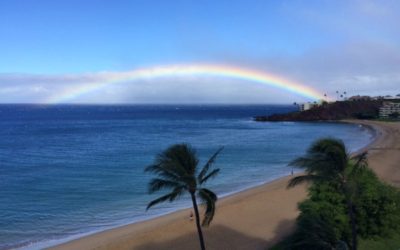 Prior to the arrival of the Missionaries and Whalers, King Kamehameha conquered Maui and declared Lahaina his home and the capital of Hawaii. Lahaina henceforth became known as "the royal capital of the Hawaiian kingdom," where Maui's highest chiefs would reside. Sometime later, around 1845, Kamehameha III moved the capital to Honolulu.
Prior to the arrival of the Missionaries and Whalers, King Kamehameha conquered Maui and declared Lahaina his home and the capital of Hawaii. Lahaina henceforth became known as "the royal capital of the Hawaiian kingdom," where Maui's highest chiefs would reside. Sometime later, around 1845, Kamehameha III moved the capital to Honolulu.
Soon, missionaries began to arrive in the islands. As their goal was to introduce Christianity to the native Hawaiian people, they began to build schools and churches across the kingdom. Prior to their arrival however, Hawaiians had no written language, only spoken. Therefore, the missionaries, with the King's approval, created the Hawaiian alphabet to help further their teachings. Using this new alphabet, the Hawaiians were soon taught how to read and write, via a Hawaiian translated Bible and other texts. By 1831, a growing number of students necessitated the creation of Maui's first school in Lahaina; which still operates today as Lahainaluna High School. In the beginning the school only admitted male students, but as more females wished to pursue an education, the school eventually became a co-ed campus in 1923. During this time, the Hale Pa'i, or house of printing, was created on school grounds. This facility brought about the creation of Hawaii's first printed newspaper, a student paper used to provide a forum promoting communication of ideas between those attending the school.
Along with this education system came a few changes to the Hawaiian way of life. Feeling that the traditional Hawaiian coverings had been much too revealing, particularly for the Hawaiian women, the missionaries introduced various articles of western clothing to Hawaii. Particularly notable was the introduction of the mu'umu'u: long, loose fitting dresses which covers ones entire body from the neck down. Today the mu'umu'u (commonly called "mu mu") is still produced in a variety of bright colors and styles. While the missionaries introduced western clothing, they also helped teach the Hawaiian people to make their own western style clothing as well.
As they learned more about the Hawaiian culture, the missionaries found a few things at odds with their own teaching, such as Hula dancing. Believing the Hula to be a form of idol worship of false gods, the missionaries quickly gained influence and outlawed the ancient Hawaiian dance. As time passed their influence grew, and soon new laws would come into effect to support their goals for the people; such as outlawing the practice of adultery and making observation of the Sabbath mandatory.
The missionaries brought about a time of great change to Lahaina and Hawaii as a whole. Without them who knows what the landscape would be like today.
This rich history today makes Lahaina a wonderful place to visit, and an even better place to live. If you're interested in living amongst this rich history, take a look at our Featured Lahaina Homes to find your piece of Hawaiian history.
(The presence of missionaries in Lahaina did not mean the time was quiet and peaceful… Our next installment: The Whaling Era.)


